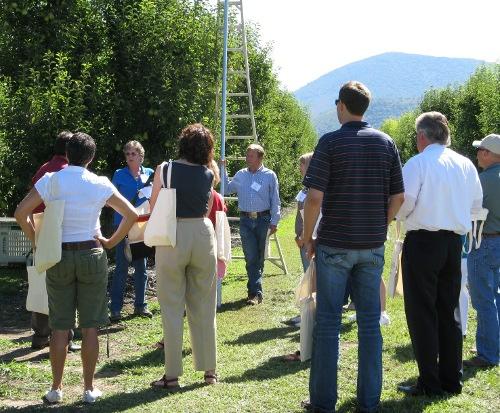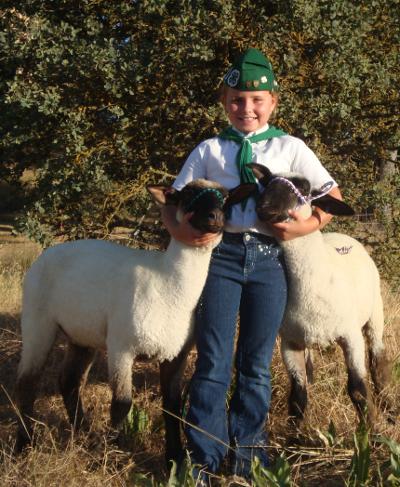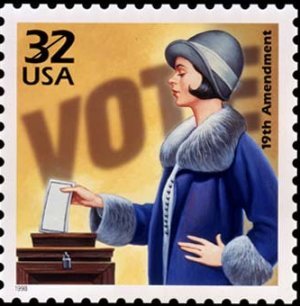- Editor
- Posted On
Community leaders selected for inaugural AgVenture class

LAKE COUNTY – Twelve community leaders from a wide range of leadership positions in Lake County have been selected to participate in a new public program.
AgVenture, an innovative concept in agricultural education designed for non-farming community leaders who wish to understand more fully the workings of the local agricultural industry, has been launched by the Lake County Chapter of California Women for Agriculture.
Members of the first class include Jackie Armstrong, Health Leadership Network; Scott DeLeon, director of the Lake County Water Resources department; Terry Dereniuk, owner of Cat’s Paw Vineyard, Kelseyville; Anthony Farrington, Lake County Supervisor; Ted Herrera, president of the LAVA Center, Nice; and Wally Holbrook, Lake County Superintendent of Schools-elect.
Also taking part are Cathy Koehler, executive director of the Lake County Land Trust and co-director of the UC Davis McLaughlin Reserve; Elizabeth Larson, editor and publisher of Lake County News; Fiona Ma, California assemblywoman, representing the 12th district (San Francisco); Ray Ruminski, director of the Lake County Environmental Health department; Debra Sommerfield, deputy county administrator for marketing and economic development; and Ruth Valenzuela, field representative for Assemblyman Wes Chesbro in Lake and Mendocino counties.
Modeled after long-standing and successful programs in Santa Cruz and Monterey counties, the AgVenture program in its initial year will consist of once-a-month, day-long seminars held over a period of three months. Each day’s session will focus on a different major commercial crop grown in Lake County and feature speakers and site visits.
The sessions will cover such topics as economics, labor, history, marketing, water and land use, ag tourism and sustainability. Class members will gain a broad knowledge about agriculture and farming in general, and more specifically about the heritage, culture, economy and business of local agriculture.
Community leaders were invited to participate and the members of the first class were selected based on their interest in the program and being in a professional position to help maintain a viable agricultural industry in Lake County.
The first in the series of seminars, held Aug. 13, focused on the pear industry in Lake County, with orchard and packing house tours. Speakers included Lake County Supervisor Rob Brown, who gave an overview of agriculture and its importance to the Lake County economy, with a discussion of pears, winegrapes and walnuts and other commercial crops.
Rep. Mike Thompson discussed invasive pest legislation, international trade issues, food safety and immigration. Rachel Elkins, UC Cooperative Extension farm advisor, covered cultural practices, the abandoned tree ordinance and water issues. Jim Bengard of Bengard Marketing informed the class about the marketing of pears, how the grower and packer derive their income, and working with foreign markets.
Diane Henderson of Henderson Orchards, Kelseyville, provided a tour and discuss cultural practices, integrated pest management and sustainability, regulatory compliance and the challenges faced by pear growers.
Toni Scully of Scully Packing, Finley, talked about issues faced within the pear industry and provide an escorted tour of a packing house in full operation.
The second session will focus on water and watershed issues and the winegrape industry, while presentations during the third seminar will discuss the walnut industry, farmers markets and the evolution of crops grown in Lake County.
Generous sponsors for the 2010 series of seminars include the Lake County Winegrape Commission, Adobe Creek Packing, Umpqua Bank, Lake County Winery Association, Woody’s Café, Tallman Hotel and Blue Wing Saloon, and Scully Packing. Additional support has been donated by Gregory Graham Winery, Lake County Wine Studio, Bengard Marketing, Lake County Pear Association, Kelseyville Pear Festival Committee, and Elizabeth Davis, Realtor.
Transportation for the field trips and site visits is being provided by the Military Funeral Honors Team van with support from the Lake County Farm Bureau.
The AgVenture program coordinator is Annette Hopkins, a graduate of the Santa Cruz Farm Bureau’s “Focus Agriculture” program.
Members of her steering committee are Toni Scully, president of Lake County CWA, Paula Bryant, Janine Grothe, Shannon Gunier, and Diane Henderson. Other members are Michelle Scully, Margaret Eutenier, and Wilda Shock, all past presidents of the Lake County Chapter of CWA.
More information about California Women for Agriculture is available by writing to P.O. Box 279, Finley, CA 95435.

 How to resolve AdBlock issue?
How to resolve AdBlock issue? 









